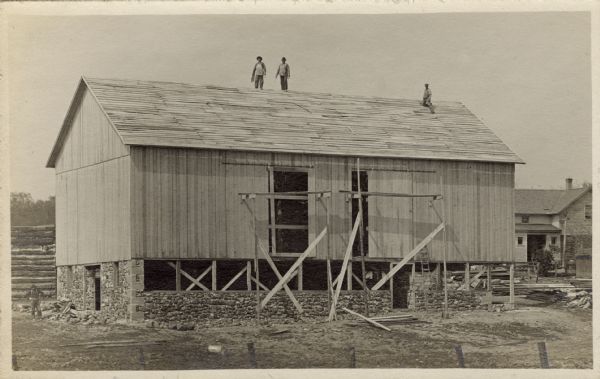Why Heritage Craftsmanship Still Matters Today
Heritage Craftsmanship and Timber Preservation: Keeping Tradition Alive

In a world filled with fast solutions and mass-produced goods, there’s something special about things built by hand. Heritage craftsmanship, especially in timber preservation, is more than just saving old buildings. It's about protecting the skills, knowledge, and care that built our history.
At Bay & Bent, we believe these traditions have a lot to teach us. Preserving historic timber structures keeps a conversation going between the past and the present. It’s a craft that holds valuable lessons for our future.
What Makes Traditional Woodworking So Special?
Heritage craftsmanship isn't about being old-fashioned. It’s about a deep connection between a craftsperson and their materials. This connection has been perfected over centuries, resulting in buildings that stand the test of time.
Time-Tested Techniques
Traditional woodworking methods have developed over hundreds of years. They weren't just random choices; they were solutions that worked. Master builders created joinery techniques that made structures incredibly strong without needing modern nails or screws.
Think of the mortise-and-tenon joints you might see in an old barn. These joints, along with the careful choice of wood for specific jobs, show a deep wisdom. This knowledge came from generations of builders who understood that quality means building for the long haul.
Sustainable Building from the Past
Long before "sustainability" was a popular term, heritage craftsmen lived it every day. They knew that materials were valuable and shouldn't be wasted. They understood which trees to use, how to dry timber correctly, and how to design buildings that could serve families for generations.
Their methods for timber preservation used natural treatments to protect wood from moisture and pests, not harsh chemicals. This created buildings that were not only durable but also healthy places to live and work.
Quality Over Quantity
The focus of heritage craftsmanship has always been on quality and function, not speed. A barn built in the 1800s can still be standing strong today, while many newer buildings need major repairs after just a few decades. This shows the value of doing things right the first time.
These traditional builders had a personal relationship with their materials. They could look at a piece of wood and understand its strengths and weaknesses. This deep knowledge allowed them to build structures that worked with nature, not against it.
Why This Knowledge Is Important Today
The lessons from heritage craftsmanship are more relevant now than ever before. From protecting our culture to helping the environment, these old ways have a lot to offer.
Connecting to Our Cultural Heritage
Historic timber buildings are a physical link to our past. They tell the story of the people who built them and the communities they served. When we preserve these structures, we keep an important part of our cultural heritage alive.
Each preservation project is a way to honor the original builders. It ensures their skills and the history of the building are not forgotten.
The Environmental Benefits
Traditional craftsmanship offers great lessons for modern sustainable building. The focus on using local materials, creating minimal waste, and building for long-term use are all principles of green construction.
Many traditional timber preservation techniques are also better for the environment than modern methods. Natural seasoning and building methods that respect wood's properties create structures with a smaller carbon footprint and a much longer life.
Passing Down Skills and Knowledge
When we lose traditional woodworking skills, we lose centuries of problem-solving and practical knowledge. These skills are a form of human creativity that is still very useful today.
Modern builders can learn so much from these old techniques. Understanding how wood behaves, how to create strong joints, and how to design structures that age well are valuable skills for any construction professional.
The Living Tradition of Timber Preservation
Heritage craftsmanship is not about making museum pieces. It’s about taking proven principles and using them to meet today's needs. The best preservation work gives new life to old structures while respecting their original character.
Modern Uses for Old Wisdom
The methods used in traditional timber framing can be used in modern building projects. The joinery techniques, understanding of wood movement, and approach to choosing materials are all highly relevant.
As we look for better ways to build, the tradition of timber craftsmanship offers proven solutions. It provides a foundation for creating buildings that meet modern demands while being kind to our environment.
Our Role at Bay & Bent
At Bay & Bent, we are dedicated to preserving historic timber frames and the traditions behind them. We travel the country to find and save beautiful old barn frames. Before we take them down, we carefully document every detail. This process is about more than just salvaging wood; it's about saving the knowledge built into each frame.
Back in our workshop, we restore these frames using the same traditional woodworking techniques the original builders used. We study the joinery and honor the character that makes each frame unique. When we ship these frames around the world, we’re sharing a piece of history and centuries of craftsmanship.
The Future of Heritage Craftsmanship
Preserving this craft means teaching it to a new generation. It’s not just about showing them how to cut a joint. It’s about sharing the philosophy of patience, detail, and respect for materials.
By adapting tradition and understanding its value, we can ensure these skills continue. In a world that often values speed over substance, heritage craftsmanship reminds us of the satisfaction that comes from creating something beautiful and built to last.
The timber frames we save carry the wisdom of the past into the future. They remind us of the importance of building things that will serve not just us, but the generations to come.









